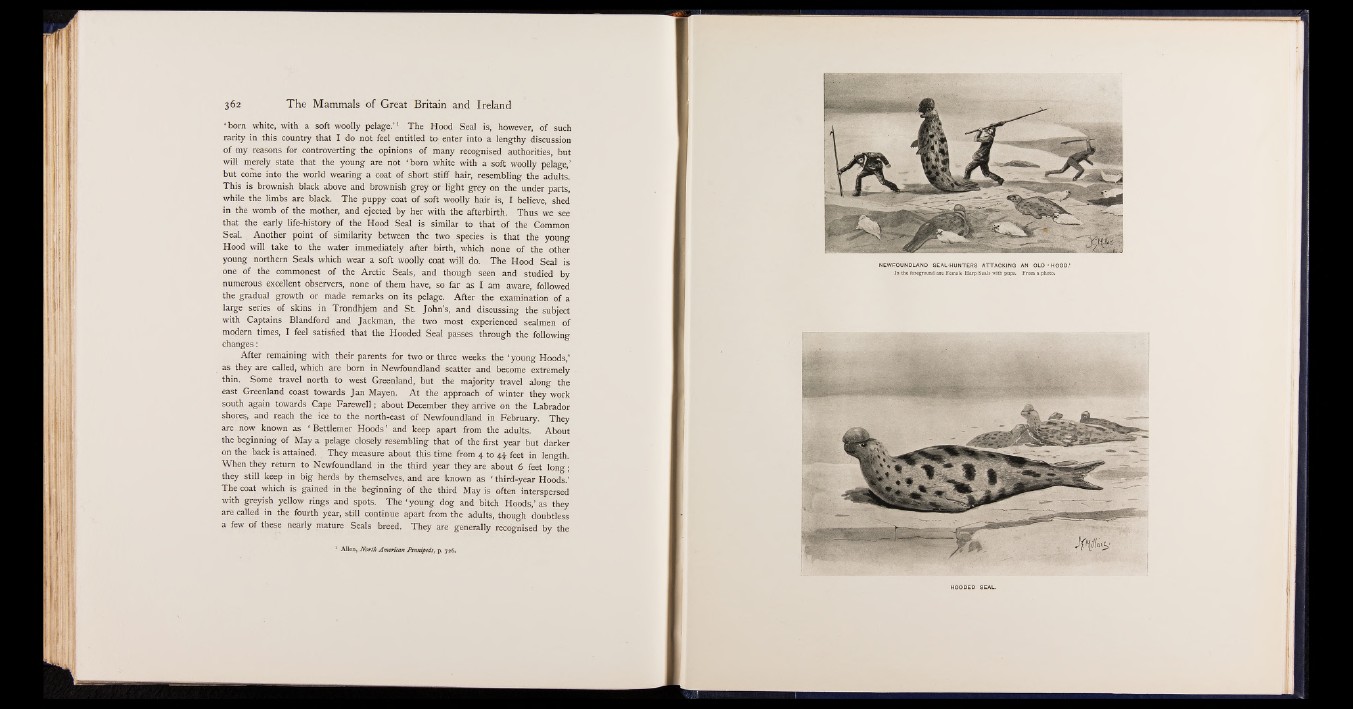
‘ born white, with a soft woolly pelage.’ 1 The Hood Seal is, however, of such
rarity in this country that I do not feel entitled to enter into a lengthy discussion
of my reasons for controverting the opinions of many recognised authorities, but
will merely state that the young are not ‘ born white with a soft woolly pelage,’
but come into the world wearing a coat of short stiff hair, resembling the adults.
This is brownish black above and brownish grey or light grey on the under parts,
while the limbs are black. The puppy coat of soft woolly hair is, I believe, shed
in the womb of the mother, and ejected by her with the afterbirth. Thus we see
that the early life-history of the Hood Seal is similar to that of the Common
Seal. Another point of similarity between the two species is that the young
Hood will take to the water immediately after birth, which none of the other
young northern Seals which wear a soft woolly coat will do. The Hood Seal is
one of the commonest of the Arctic Seals, and though seen and studied by
numerous excellent observers, none of them have, so far as I am aware, followed
the gradual growth or made remarks on its pelage. After the examination of a
large series of skins in Trondhjem and St. John’s, and discussing the subject
with Captains Blandford and Jackman, the two most experienced sealmen of
modern times, I feel satisfied that the Hooded Seal passes through the following
changes:
After remaining with their parents for two or three weeks the ‘ young Hoods,’
as they are called, which are born in Newfoundland scatter and become extremely
thin. Some travel north to west Greenland, but the majority travel along the
east Greenland coast towards Jan Mayen. At the approach of winter they work
south again towards Cape Farewell; about December they arrive on the Labrador
shores, and reach the ice to the north-east of Newfoundland in February. They
are now known as ‘ Bettlemer Hoods ’ and keep apart from the adults. About
the beginning of May a pelage closely resembling that of the first year but darker
on the back is attained. They measure about this time from 4 to 4} feet in length.
When they return to Newfoundland in the third year they are about 6 feet long;
they still keep in big herds by themselves, and are known as ‘ third-year Hoods.’
The coat which is gained in the beginning of the third May is often interspersed
with greyish yellow rings and spots. The ‘ young dog and bitch Hoods,’ as they
are called in the fourth year, still continue apart from the adults, though doubtless
a few of these nearly mature Seals breed. They are generally recognised by the
Allen, North American Pinnipeds, p. 726,